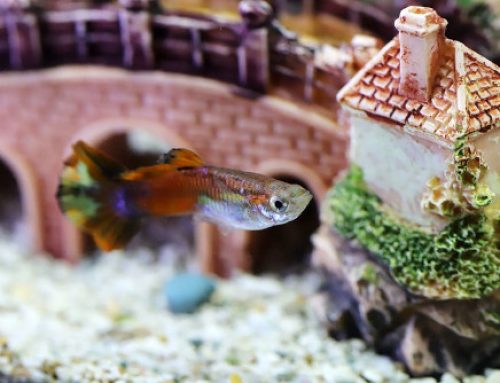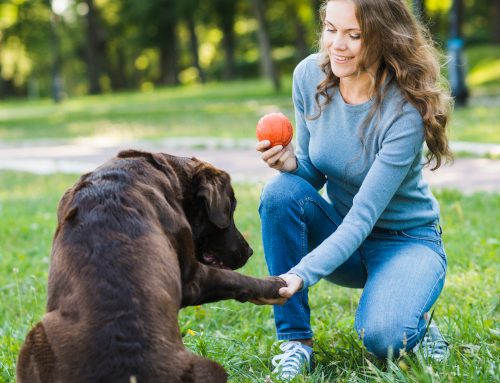Table of Contents
- Introduction
- Background information
- Definition of separation anxiety
- Purpose of this article
- Things that Will Not Help
- Punishment
- Getting additional pets
- Obediance training
- Crating your dog
- Causes of Separation Anxiety In Dogs
- Lack of socialization & early life experiences
- Changes in routine or environment
- Traumatic Experiences
- Breed predisposition to separation anxiety
- Symptoms of Separation Anxiety in Dogs
- Destructive behavior
- Excessive barking or howling
- House soiling
- Agitation, restlessness, or pacing
- Escape attempts or excessive digging
- Physical symptoms
- The Impact Of Separation Anxiety on Dogs
- Psychological distress
- Physical health implications
- Strained owner-pet relationships
- Impact on overall well-being
- Diagnosing Separation Anxiety In Dogs
- Recognizing and documenting behavioral patterns
- Document behavior and progress with video and written records
- Ruling out other potential causes
- Managing And Treating Separation Anxiety In Dogs
- Creating a safe and comfortable environment
- Gradual desensitization and counterconditioning techniques
- Providing mental and physical stimulation
- Implementing A Consistent Routine
- Using Positive Reinforcement Training Methods
- Seeking Professional Help
- Enlisting the expertise of a dog behaviorist
- Ask your veterinarian for a referral to a behaviorist
- Exploring alternative therapies or techniques
- Preventing Separation Anxiety In Dogs
- Early Socialization And Positive Experiences
- Gradual Exposure To Being Alone
- Ensuring Regular Exercise And Mental Stimulation
- Avoiding Sudden Changes In Routine Or Environment
- Gradual Desensitization To Departures And Arrivals
- Utilizing Interactive Toys And Puzzles
- Considering Doggie Daycare Or Pet-Sitting
- The Role Of Owner's Support
- Building A Strong Bond Through Positive Reinforcement
- Practicing Patience And Understanding
- Providing A Secure And Comforting Environment
- Seeking Ongoing Education
- Wrap up
Separation anxiety is not a trivial matter; it has profound implications for the emotional and physical health of dogs and the bond between dogs and their owners. This complex behavioral disorder affects countless dogs, causing them significant distress when separated from their owners. It affects 20% to 40% of dogs presented to veterinary behavioral specialists. Dogs, known for their strong bond with humans, can experience intense anxiety and fear when left alone. As serious as this condition can sometimes be, it is treatable. Pet owners are often successful in treating their dog’s anxiety themselves. And even extreme cases can be treated with professional help. It is important for dog owners to understand the nature of separation anxiety. Dog owners who take the necessary steps, can look forward to spending years with a happy anxiety free dog.
Background information
Separation anxiety in dogs is not a new phenomenon. Dogs have evolved as social animals, from relying on their pack in the wild to seeking comfort in the presence of their human companions. When left alone some dogs struggle to cope with the absence of their owners, leading to a wide range of distressing behaviors. These behaviors can manifest in destructive acts, excessive vocalization, and even physical symptoms such as trembling and panting.
Definition of Separation Anxiety in Dogs
Separation anxiety can be defined as a condition in which a dog experiences intense anxiety and fear when separated from its owner or when expecting such separation. It is important to differentiate separation anxiety from the general distress that dogs may feel when left alone. Separation anxiety involves an extreme and disproportionate reaction to separation, resulting in significant emotional and behavioral disturbances.
While exact statistics are challenging to determine, studies suggest that up to 20% of dogs may experience separation anxiety to some degree. The condition can affect dogs of all breeds, ages, and backgrounds. It is not limited to a specific subset of dogs but can appear in any dog with a strong attachment to their owner.
Don’t underestimate the abilities dogs have to feel emotional pain and anxiety. Dogs showing severe anxiety symptoms need your prompt action to lower stress levels.
Purpose of this article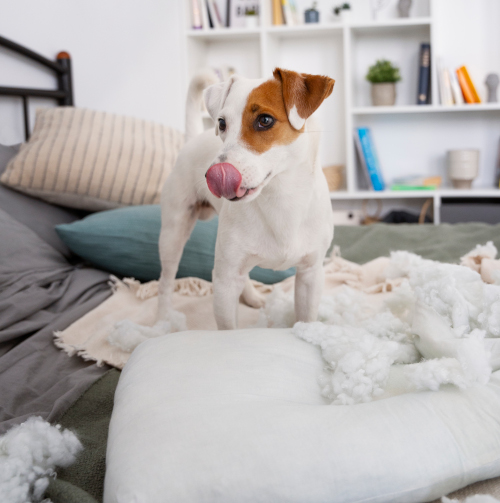
This article will delve into the causes, symptoms, and potential solutions for separation anxiety in dogs. Hopefully, by developing a better understanding of the causes, we can address the condition more effectively. Recognizing the symptoms of separation anxiety is important for early intervention. Addressing issues early enables owners to furnish the required support and alleviate their dog’s long-term suffering. In addition, exploring potential solutions, from behavioral modification techniques to medication options, can empower dog owners to better assist their dogs in overcoming separation anxiety and improving their overall well-being.
Things that will not help separation anxiety
Punishment
Punishment is not helpful in preventing anxious behavior and it may increase the likelihood of negative results. Your dog will likely be frightened by your anger but it’s unlikely to associate your actions with their own.
Getting additional pets
Your dog’s anxiety is not usually a result of being lonely, it’s caused by their separation from you. If there is a component of loneliness with your dog, a second pet might be helpful, but you will still have to deal with the dog’s separation from you.
Obedience Training
All dogs benefit from learning the basics of obedience training. But training focused purely on obedience will not include the types of training and desensitization needed to address separation issues.
Crating your dog
Don’t use a crate to control an anxious dog. Locking up an anxious dog can lead to panicking and creates such a strong need to escape that the dog can become injured trying to escape.
Causes of Separation Anxiety in Dogs
Lack of socialization and early life experiences
One of the leading causes of separation anxiety in dogs can be attributed to the lack of proper socialization and early life experiences. Puppies that are not exposed to a variety of people, animals, and environments during their critical developmental period may struggle with anxiety when faced with new situations or separation from their owners. Socialization plays a crucial role in helping dogs develop confidence and adaptability, enabling them to feel more secure when alone.
Changes in routine or environment
Dogs are creatures of habit, and sudden changes in their routine or environment can trigger separation anxiety. Major life events such as moving to a new house, a family member leaving or passing away, or a significant change in the daily schedule can disrupt a dog’s sense of security. Dogs thrive on predictability, and when their familiar routines are disrupted, they may become anxious and struggle with being alone.
Traumatic experiences
Dogs that have experienced traumatic events in the past, such as abuse, neglect, or abandonment, are more prone to developing separation anxiety. These traumatic experiences can have a lasting impact on a dog’s emotional well-being, making them fearful and anxious when separated from their trusted human companions. The fear of abandonment and the associated emotional scars can contribute significantly to separation anxiety.
Breed predisposition to separation anxiety
Certain dog breeds are more genetically predisposed to separation anxiety than others. Breeds known for their loyalty and strong attachment to their owners, such as Labrador Retrievers, German Shepherds, and Vizslas, may be more prone to experiencing separation anxiety. It is important for owners of these breeds to be aware of this predisposition and take proactive measures to prevent or manage separation anxiety through appropriate training and socialization.
 Symptoms of Separation Anxiety in Dogs
Symptoms of Separation Anxiety in Dogs
Destructive behavior
One of the hallmark symptoms of separation anxiety in dogs is destructive behavior. When left alone, anxious dogs may engage in destructive acts as a means of coping with their anxiety. They may chew on furniture, pillows, or other household items, causing significant damage. Scratching doors or windows is also common, as dogs attempt to escape or find a way back to their owners. The destruction serves as an outlet for their built-up anxiety and can be frustrating for owners.
Excessive barking or howling
Another prominent symptom of separation anxiety is excessive vocalization. Dogs with separation anxiety may bark or howl excessively when left alone. This vocalization is an expression of their distress and an attempt to seek attention or contact with their owners. The barking or howling may persist for prolonged periods, disturbing neighbors, causing additional stress for the dog and the owner.
House soiling despite prior house-training
Despite being previously house-trained, dogs with separation anxiety may engage in inappropriate elimination behaviors when left alone. They may urinate or defecate inside the house, even if they have never displayed such behavior before. This is not due to the lack of house training but rather a manifestation of their anxiety and emotional distress when separated from their owners. The soiling is a result of the heightened stress response and can be difficult for owners to manage.
Agitation, restlessness, or pacing
Anxious dogs often display signs of agitation and restlessness when experiencing separation anxiety. They may pace back and forth or exhibit repetitive behaviors, unable to settle down. The pacing and restlessness are indicators of their inner turmoil and their desperate attempt to alleviate their anxiety. This behavior can be observed before the owner’s departure or persist throughout the entire duration of their absence.
Escape attempts or excessive digging
In an attempt to reunite with their owners, dogs with separation anxiety may resort to escape attempts. They may scratch doors, windows, or even walls in an effort to break free. Some dogs may exhibit excessive digging behaviors, attempting to dig out of confined spaces. These escape attempts are driven by their overwhelming desire to be reunited with their owners and can result in injury or property damage.
Physical symptoms
Physical symptoms often accompany the emotional distress experienced by dogs with separation anxiety. Panting, drooling, and trembling are common physiological responses. These symptoms reflect heightened stress levels and can persist throughout the period of separation. The physical manifestations of anxiety can be distressing for the dog and the owner, further emphasizing the need for appropriate intervention and support.
The Impact of Separation Anxiety on Dogs
Psychological distress and emotional suffering
Separation anxiety has a profound impact on the psychological well-being of dogs, leading to significant distress and emotional suffering. Dogs experiencing separation anxiety endure high levels of fear, anxiety, and panic when separated from their owners. The constant worry and anticipation of being left alone can take a toll on their mental state. They may feel abandoned, helpless, and overwhelmed, leading to long-lasting emotional trauma. This psychological distress can be debilitating and greatly diminishes the dog’s overall quality of life.
Physical health implications
The physical health of dogs with separation anxiety is also at risk. The destructive behavior exhibited during episodes of anxiety can result in injuries. Dogs may chew on furniture or objects that pose hazards, leading to broken teeth, cuts, or gastrointestinal blockages if ingested. Additionally, excessive scratching and attempts to escape can cause wounds, abrasions, or broken nails. The physical health implications of separation anxiety further compound the challenges faced by the dog and the owner.
Strained owner-pet relationships
Separation anxiety can strain the relationship between a dog and its owner. The constant distress and disruptive behaviors can be frustrating and exhausting for owners to manage. They may feel helpless or guilty and unsure how to alleviate their pet’s suffering. The stress of dealing with separation anxiety can lead to strained owner-pet relationships and even feelings of resentment or frustration.
Potential impact on overall well-being and quality of life
The constant emotional turmoil and the restrictions imposed by the anxiety can limit the dog’s ability to engage in normal activities and experiences. Dogs may become fearful or anxious in various situations, hindering their social interactions and reducing their enjoyment of daily life. The distress and limitations imposed by separation anxiety can prevent dogs from living their lives to the fullest, resulting in a lower overall quality of life.
Diagnosing Separation Anxiety in Dogs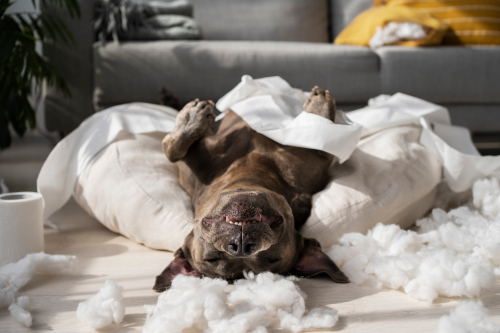
Recognizing and documenting behavioral patterns
Diagnosing separation anxiety in dogs requires careful observation and documentation of their behavioral patterns. Pet owners should pay close attention to the dog’s behavior during times of separation or anticipation of being left alone. Common signs to watch for include excessive vocalization, destructive behavior, house soiling, pacing, and signs of distress such as panting or drooling. It is important to note the frequency, intensity, and duration of these behaviors to establish a clear pattern that indicates separation anxiety rather than other causes.
Document behavior and progress with video and written records
Making videos when you first suspect a problem will help with diagnosis and serve as a baseline for future treatments. Videos taken when you are away help you focus on the symptoms troubling your dog the most. The videos should be dated and kept. You may also find a written record helpful. Documenting things that trigger anxiety as well as actions that help to calm your pet can be helpful in deciding what efforts are effective.
Ruling out other potential causes
When suspecting separation anxiety, it is advisable to consult with your veterinarian. You will want your vet to rule out other potential causes of similar behaviors before concluding that a dog has separation anxiety. Certain medical conditions, such as urinary tract infections or gastrointestinal issues, can lead to house soiling or destructive behaviors. Pain or discomfort could also be responsible for changes in behavior. Additionally, some dogs may exhibit similar behaviors due to boredom, lack of exercise, or insufficient mental stimulation. By eliminating these alternative causes, the diagnosis of separation anxiety becomes more accurate and effective.
Diagnosing separation anxiety in dogs requires a comprehensive approach that involves careful observation, professional evaluation, and the process of elimination. It is important to remember that each dog is unique, and the diagnostic process may vary based on individual circumstances. A proper diagnosis sets the stage for implementing appropriate treatment and management strategies to address the specific needs of the dog.
Managing and Treating Separation Anxiety in Dogs
Creating a safe and comfortable environment
Creating a safe and comfortable environment is crucial for managing separation anxiety in dogs. Designate a specific area in the home where the dog feels secure and relaxed, such as a crate or a cozy corner with their bed and toys. This space should be associated with positive experiences and accessible to the dog even when the owner is present. Additionally, provide environmental enrichment such as puzzle toys or interactive feeders to keep the dog mentally stimulated and engaged.
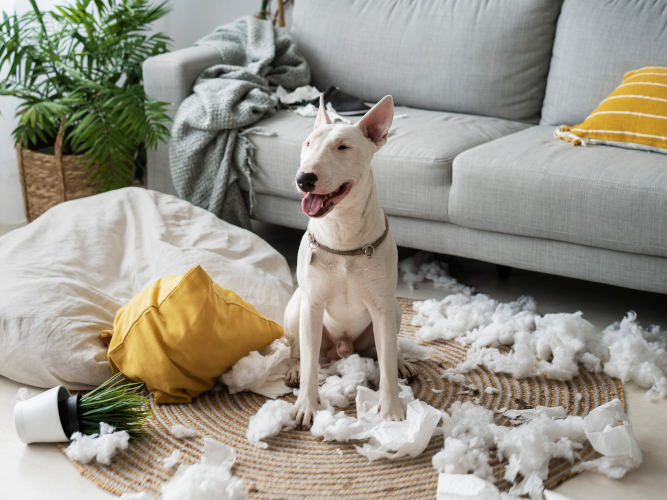 Gradual desensitization and counterconditioning techniques
Gradual desensitization and counterconditioning techniques
Gradual desensitization and counterconditioning techniques can help alleviate separation anxiety in dogs. The process involves gradually exposing the dog to situations that trigger their anxiety, starting with mild triggers and slowly increasing the duration and intensity over time. Pairing these situations with positive experiences, such as treats, toys, or praise, can help change the dog’s emotional response. This technique helps the dog associate being alone with positive outcomes and slowly reduces their anxiety.
Providing mental and physical stimulation
Mental and physical stimulation is required for managing separation anxiety in dogs. Engage in activities that challenge their minds, such as obedience training, interactive games, or scent work. Physical exercises, such as daily walks or play sessions, help release pent-up energy and promote relaxation. Providing outlets for mental and physical stimulation helps tire the dog out and reduces anxiety levels.
Implementing a consistent routine and predictable schedule
Establishing a consistent routine and predictable schedule can greatly benefit dogs with separation anxiety. Dogs thrive on structure and knowing what to expect. Stick to regular feeding times, exercise routines, and departure rituals. Consistency in these daily activities helps create a sense of security and predictability for the dog, reducing their anxiety about being left alone.
Using positive reinforcement training methods
Positive reinforcement training methods are effective in managing separation anxiety. Reward desired behaviors, such as calmness or independent play, with treats, praise, or affection. Avoid punishment or scolding because it can increase anxiety and worsen the condition. Instead, focus on rewarding the dog for displaying relaxed and confident behaviors during times of separation or when left alone. Positive reinforcement helps build the dog’s confidence and reinforces positive associations with being alone.
Seeking professional help
If the dog’s separation anxiety persists or worsens despite implementing management strategies, it is time to consider professional help. Regard your veterinarian as your first point of contact for professional services. As suggested earlier, you’ll want your vet to rule out any underlying health issues. Depending on their training, your veterinarian may or may not offer treatment for behavior issues. If not, it’s likely they will refer you to a dog behaviorist.
Enlisting the expertise of a dog behaviorist
A dog behaviorist’s background can vary from a dog handler with years of hands-on experience dealing with emotionally troubled dogs to several years of formal education up to and including a Ph.D. There are professional organizations certifying behaviorists using various requirements for subject knowledge, clinical hours, continuing education, and training experience.
Reviewing each of the certifying organizations is outside the scope of this article. However, there are steps you might take as you consider a behavior specialist:
Ask your veterinarian for a referral to a behaviorist
There are no national requirements to be an animal behaviorist. But education and experience can be important considerations when choosing a specialist for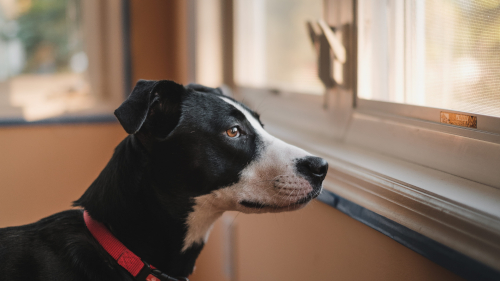 your dog. Ask about education, experience with separation issues, and any certifications.
your dog. Ask about education, experience with separation issues, and any certifications.
Ask about training methods and the specialist’s philosophy regarding overcoming separation anxiety.
Ask for references from clients whose pets overcame similar issues as a direct result of training.
Be sure you understand and approve of the training methods used by the specialist you are considering.
The expertise of a dog behaviorist can be invaluable in addressing separation anxiety. These professionals specialize in understanding canine behavior and have experience working with dogs with anxiety disorders. They can assess the dog’s specific needs, develop a tailored treatment plan, and guide the owner through the process of managing and treating separation anxiety.
A certified dog behaviorist will likely employ evidence-based techniques, such as desensitization and counterconditioning, to help the dog overcome anxiety. They can give guidance on implementing gradual exposure exercises, where the dog is slowly exposed to being alone for increasing durations. These professionals can also educate owners about recognizing and interpreting their dog’s body language and behavior, allowing for more effective communication and understanding.
Additionally, a certified dog behaviorist can offer support and reassurance to owners who may feel overwhelmed or unsure of how to navigate their dog’s separation anxiety. They can address any concerns or challenges that arise during the treatment process and provide ongoing guidance and adjustments to the treatment plan as needed.
Exploring alternative therapies or techniques
In some cases, standard methods of managing separation anxiety may not be fully effective for certain dogs. This is where exploring alternative therapies or techniques becomes crucial. Alternative therapies, such as aromatherapy, acupuncture, or herbal supplements, may offer additional support in reducing anxiety levels. While the efficacy of these approaches may vary, some dogs may benefit from their calming effects.
Innovative techniques, such as virtual reality exposure therapy or specialized anxiety wraps, are also emerging as potential options for managing separation anxiety. These approaches aim to desensitize dogs to anxiety-inducing situations in a controlled and safe manner.
Owners should work closely with professionals to evaluate the suitability of alternative therapies or techniques for their specific dog’s needs. It is important to note that these methods should always be used in conjunction with proven behavior modification techniques and under the guidance of a certified professional.
Dog owners who employ a combination of these management and treatment strategies greatly increase the benefits they provide to help their furry companions cope with separation anxiety. Patience, consistency, and a proactive approach are keys to successfully managing this challenging condition.
Preventing Separation Anxiety in Dogs
Early socialization and positive experiences
Preventing separation anxiety in dogs begins with early socialization and positive experiences. Introduce the puppy to various people, animals, and environments during the critical socialization period, which typically occurs between 3 and 14 weeks of age. Exposing them to different stimuli helps build their confidence and resilience, making them more adaptable to new situations. Positive experiences during this period lay a foundation of emotional well-being and can contribute to preventing separation anxiety later in life.
Gradual exposure to being alone
Gradual exposure to being alone is helpful in preventing separation anxiety. Start by leaving the puppy alone for short periods and gradually increase the duration. This process helps the puppy develop a sense of independence and self-assurance. Use positive reinforcement by rewarding calm and independent behavior during these alone times. By slowly acclimating the puppy to being alone, you can help them feel more secure and reduce the likelihood of separation anxiety developing.
Ensuring regular exercise and mental stimulation
Regular exercise and mental stimulation play a crucial role in preventing separation anxiety in dogs. Implement daily exercise through walks, runs, or play sessions to help release excess energy and promote relaxation. Mental stimulation, such as puzzle toys, interactive feeders, or training exercises, engages the dog’s mind and prevents boredom. A tired and mentally stimulated dog is less likely to develop anxiety or exhibit destructive behaviors when left alone.
Avoiding sudden changes in routine or environment
Sudden changes in routine or environment can be unsettling for dogs and increase the risk of separation anxiety. Dogs thrive on predictability and a stable environment. Avoid abrupt changes in their daily routines, such as feeding times, exercise schedules, or sleeping arrangements. When changes are unavoidable, introduce them gradually, allowing the dog time to adjust and feel secure. Providing a stable and predictable environment helps prevent anxiety triggers and promotes emotional well-being.
Gradual desensitization to departures and arrivals
Gradual desensitization to departures and arrivals can help prevent separation anxiety. Dogs often associate certain cues or actions with their owner’s departure, such as picking up keys or putting on shoes. By desensitizing the dog to these triggers, they become less anxious when they occur. Practice these cues without actually leaving, slowly increasing their frequency and duration. Similarly, desensitize the dog to your return by entering the house quietly and calmly, avoiding excessive excitement. This gradual approach helps the dog develop a more relaxed response to departures and arrivals, reducing the likelihood of separation anxiety.
Using interactive toys and puzzles
Interactive toys and puzzles can be valuable tools in preventing separation anxiety. These toys give mental engagement and stimulation, keeping the dog occupied and focused on a positive activity. Food-dispensing toys or puzzle games require problem-solving skills, helping to alleviate boredom and anxiety. By providing mental enrichment in the form of interactive toys, you can create a positive association with independent play and reduce the risk of separation anxiety.
Considering doggie daycare or pet-sitting
Considering doggie daycare or pet-sitting services can help prevent separation anxiety in dogs. These services provide companionship and supervision during periods when the owner needs to be away for extended periods. Doggie daycare allows for socialization and interaction with other dogs, providing mental and physical stimulation. Professional pet sitters can provide the dog with personalized attention and care, reducing feelings of loneliness and anxiety. By ensuring that the dog is not left alone for prolonged periods, these services can contribute to preventing separation anxiety.
When selecting a doggie daycare or pet-sitting service, it is important to research and choose reputable providers. Look for facilities or individuals with experience handling separation anxiety or behavior issues in dogs. Ensure they have a safe and secure environment, positive reviews from other pet owners, and proper certifications or licenses.
The Role of Owners in Supporting Dogs with Separation Anxiety
Building a strong bond through positive reinforcement and trust
Building a strong bond with a dog is needed to support them through separation anxiety. Owners can establish a positive and trusting relationship with their dogs through the consistent use of positive reinforcement techniques. Rewarding desired behaviors, such as calmness and independence, with treats, praise, or affection helps reinforce positive associations. This positive reinforcement strengthens the bond between the owner and the dog, making the dog feel more secure and supported.
Practicing patience and understanding
Dealing with separation anxiety requires patience and understanding from the owner. It is important to remember that overcoming separation anxiety is a gradual process that may take time. Owners should avoid becoming frustrated or impatient with their dogs during treatment. Dogs may experience setbacks or show resistance, but with patience and consistency, progress can be made. Understanding the underlying fear and anxiety that dogs with separation anxiety face allow owners to approach the treatment process with empathy and compassion.
Providing a secure and comforting environment
Creating a secure and comforting environment is crucial for dogs with separation anxiety. Owners should ensure that the dog has a designated safe space, such as a crate or a specific room, where they can go when anxious. This space should be equipped with familiar items, such as bed, toys, and blankets, to provide comfort and a sense of familiarity. Additionally, leaving soothing background sounds, such as calming music or white noise, can help reduce anxiety levels.
There is a large variety of calming aids available, such as pheromone diffusers or anxiety wraps, calming treats, and toys to create a calming atmosphere. These tools can help reduce stress and create a more relaxed environment for the dog. These products may not give the same stress reduction for all dogs and are more likely to be effective when used as a part of an overall anxiety management effort.
Seeking ongoing education and support
Owners should actively seek ongoing education and support to effectively manage separation anxiety in their dogs. Understanding the underlying causes, behavioral cues, and treatment strategies is crucial for successful management. Owners can attend training classes or workshops that specifically address separation anxiety in dogs. These educational opportunities provide valuable insights and techniques for managing and treating the condition.
Owners should also engage with online communities or support groups dedicated to separation anxiety in dogs. These communities allow for sharing experiences, seeking advice, and finding emotional support from individuals who have gone through similar situations. Sharing insights, success stories, and challenges with others who understand can be a source of encouragement and motivation.
Wrap up
Separation anxiety is a significant issue affecting many dogs and can have a profound impact on their well-being. We have explored the causes, symptoms, and impact of separation anxiety in dogs. From the lack of socialization and traumatic experiences to destructive behaviors and strained owner-pet relationships, separation anxiety takes a toll on the physical and emotional health of our canine companions.
It is important to recognize the significance of early intervention and owner support. By focusing on early socialization, gradual exposure to being alone, and providing regular exercise and mental stimulation, we can create a solid foundation for preventing separation anxiety from developing in the first place. Moreover, understanding the role of owners in supporting their dogs through positive reinforcement, patience, and the creation of a secure environment is vital.
However, even with the best preventative measures, some dogs may still experience separation anxiety. In such cases, seeking professional intervention becomes unavoidable. Consulting with a veterinarian to rule out underlying health issues and enlisting the expertise of a certified dog behaviorist can make a significant difference in addressing and managing separation anxiety effectively. These professionals can deliver guidance, develop tailored treatment plans, and offer ongoing support throughout the process.
It is crucial for dog owners to remember that they are not alone on this journey. There are resources available, including online communities, support groups, and educational opportunities, providing valuable information and emotional support. Seeking help and implementing appropriate strategies are acts of compassion Behand responsibility towards our four-legged friends.
In conclusion, reflect on the importance of promoting the emotional well-being of our canine companions. Dogs are not just pets; they are family members who rely on us for their care and support. By understanding the causes and impact of separation anxiety, we can take proactive steps to prevent, identify, and address this condition. The big payback for all the effort can be a happy will adjusted pet companion.
References:
Care Center Vets, Please Don’t Go: Separation Anxiety in Dogs, https://carecentervets.com/please-dont-go-separation-anxiety-dogs/
Salonen, M., Sulkama, S., Mikkola, S. et al. Prevalence, comorbidity, and breed differences in canine anxiety in 13,700 Finnish pet dogs. Sci Rep 10, 2962 (2020). https://doi.org/10.1038/s41598-020-59837-z
American Veterinary Medical Foundation (AVMF) Setting the stage for owners when senior pets develop behavior problems, https://www.avma.org/javma-news/2021-05-15/setting-stage-owners-when-senior-pets-develop-behavior-problems
American Kennel Club, Separation Anxiety in Dogs: Causes, Prevention, and How to Stop, Jan 17, 2023,
https://www.akc.org/expert-advice/training/dog-separation-anxiety-how-to-stop/
The Humane Society of the United States, How to help a dog with anxiety, downloaded 5/14/2023, https://www.humanesociety.org/resources/how-help-dog-anxiety
Today’s Veterinary Practice, Canine Separation Anxiety, December 2012, https://todaysveterinarypractice.com/behavior/on-your-best-behavior-canine-separation-anxiety/
petMD, How to Help a Dog With Separation Anxiety, December 7, 2022, https://www.petmd.com/dog/training/how-help-dog-separation-anxiety
Progressive Animal Welfare Society (PAWS), Separation Anxiety, Downloaded 5/14/2023, Separation Anxiety, https://www.paws.org/resources/separation-anxiety/
Sargisson R. Canine separation anxiety: strategies for treatment and management. Vet Med (Auckl). 2014;5:143-151, https://www.dovepress.com/canine-separation-anxiety-strategies-for-treatment-and-management-peer-reviewed-fulltext-article-VMRR
Rynae Butler, Rebecca J. Sargisson, Douglas Elliffe, The efficacy of systematic desensitization for treating the separation-related problem behavioral of domestic dogs, Applied Animal Behavioral Science, Volume 129, Issues 2–4, 2011, Pages 136-145, ISSN 0168-1591, https://doi.org/10.1016/j.applanim.2010.11.001. https://www.sciencedirect.com/science/article/pii/S0168159110002923
DISCLAIMER:
We use affiliate links and pay-per-action advertising. When you use these links to buy something we may earn a commission. Thank you for visiting and for your support.
PetsWebPages.com may contain copyrighted material. This use may not have been specifically authorized by the copyright owner. The material contained in this website is distributed for informational and educational purposes. Small portions of the original work may have been used but those portions could not easily be used to duplicate the original work. This usage constitutes ‘fair use’ of any such copyrighted material (referenced and provided for in section 107 of the US Copyright Law).
All trademarks displayed here are the property of their owners and are neither an endorsement nor a recommendation for or from those organizations. With the exception of affiliate links, linking to the websites of third-party organizations is not intended to imply we recommend those organizations or that the organizations endorse or have any affiliation with PetsWebPages.com.


